How to Fix a Toilet That Won't Flush Properly
Posted by Express Sewer & Drain Team on
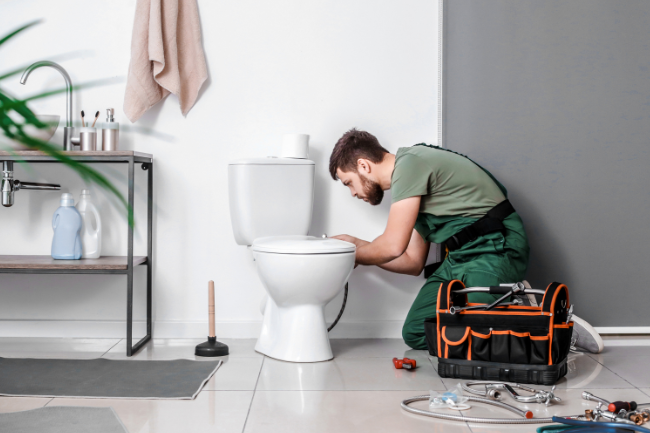
If your toilet is not flushing properly, it can be a huge inconvenience. Not only is it frustrating to have to deal with a running toilet, but it can also be messy and unpleasant for your home.
If you're wondering how to fix a toilet that won't flush, don't worry - this can be a fairly simple DIY job, especially once you know the common causes and how to remedy them.
Top 5 Most Common Toilet Issues
Here is a list of common toilet problems that plague households - including yours. Luckily, many toilet issues can be solved with a simple DIY plumbing repair.
1. Overflowing Toilets
We know that sinking you feel when the water in your bowl starts to rise. However, an overflowing toilet doesn’t mean you need to panic.
First, turn the water supply off to your toilet (behind the bowl there should be copper tubing). If you suspect that the toilet is clogged, don't flush it. If the pipe is clogged, the new flood of water will just cause the toilet to overflow.
Quickly remove the top of the tank. The flapper will be at the bottom of the tank. Push down on the flapper. You might be able to stop any more water from releasing into the bowl. When the water is shut off, you can try plunging or snaking to clear a clog. If plunging doesn’t work, try dropping some Dawn or other dish soap into the bowl.
After doing so, let it sit for a while. The soap should help break up the clog. Repeat plunging after you let it sit. If that doesn’t work, it could mean something more serious that requires a video inspection from a professional plumber.
2. Running Tank
Running tanks are not only annoying but also wasteful and cost you more money than you might realize. Replacing the flapper is one solution.
To test it out, push down on the flapper with a stick when you hear the water running and listen for it to stop. If it stops, you know the flapper isn’t sealing properly and needs to be replaced. Flappers are super easy to purchase and replace, and most assemblies come with clear instructions for installation.
3. Bad Water Supply Valve
Whether because of age or wear, sometimes your water supply valve will go bad. Sometimes sand or grit can cause the water inside the tank to keep running. Luckily, water supply valves are cheap (less than $10, usually). First, shut off the water supply. Use a sponge or rag to mop up the remainder of the water inside the tank.
Next, put in the new valve and attach the water supply to the valve. Turn on the water and check for leaks.
4. Partial Flush
The flapper valve may be saturated and dropping too quickly. Inspect the flapper valve during a flush. It should stay up until about 80 percent or more of the water has drained from the tank. If it drops sooner, install a new flapper.
5. Slow or Sluggish Flush
If you’re noticing your toilet flush slowly, this may be indicative of several things. The toilet could have a partial clog or the obstruction could be further down in your pipes.
Common Reasons Why Your Toilet Won't Flush
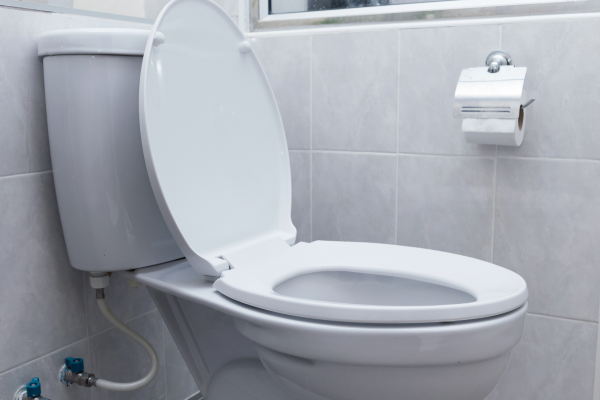
There are a few different reasons why your toilet may not be flushing properly. The most common? You have a clogged toilet.
Your Toilet Is Clogged
One of the most common reasons is that there is something blocking the toilet's drainage pipe. This can be anything from a small object that was accidentally flushed, using too much toilet paper, or tree roots that have grown into the pipe. Be sure to avoid putting items like paper towels or feminine hygiene products down the toilet to prevent clogs.
The Flapper Assembly Is Not Right
A running toilet is wasteful. A leading factor in high water bills, running toilets left unrepaired can cost you hundreds of dollars in water usage each year—and it could all be due to your toilet flapper.
The flapper is the rubber valve in the tank that raises and lowers with each flush, managing the amount of water flowing into the bowl. But a worn flapper can’t perform as designed, allowing leakage and seepage that keeps the water running. Thankfully, flapper valves are very inexpensive and easily installed; look for them at your local home improvement or hardware store.
The toilet flapper assembly is the part of the toilet that controls how much water is released when you flush. If this assembly is not installed correctly, or if it is damaged, it can cause your toilet to not flush properly.
When you lift the toilet's tank lid, you'll see a chain that attaches to the toilet handle's flush lever. The piece of rubber you see at the other end of the chain is your flapper valve. This chain can sometimes become unconnected, which can cause the toilet to not flush. This is an easy fix: all you have to do is rehook the chain.
You want to make sure there is not too much slack in the lift chain; the slack should only be about half an inch. Simply unhook the chain and choose a link closer to the flapper valve if you have too much slack. This should help your toilet flush again.
There Is Not Enough Water in the Bowl
If there isn't enough water in the bowl, then there won't be enough to properly flush the waste away. Most toilets need to flush around 80% of your toilet's water supply, otherwise, you risk a partial flush.
This can be caused by a number of things, such as a leaky fill valve or a clogged vent stack. You should also check your overflow tube to ensure there are no cracks in it.
Your Toilet's Water Tank Needs to Be Checked
If your toilet's water tank is not filling up properly, then it can also cause your toilet to not flush properly. This is usually due to a problem with the float arm or the fill valve.
Your Toilet Rim Holes Are Clogged
The rim holes are the small holes around the edge of the toilet bowl. These little holes allow water to enter the bowl when you flush, and if they are clogged, it can cause your toilet to not flush properly.
Tips For Fixing a Toilet That Won't Flush Completely
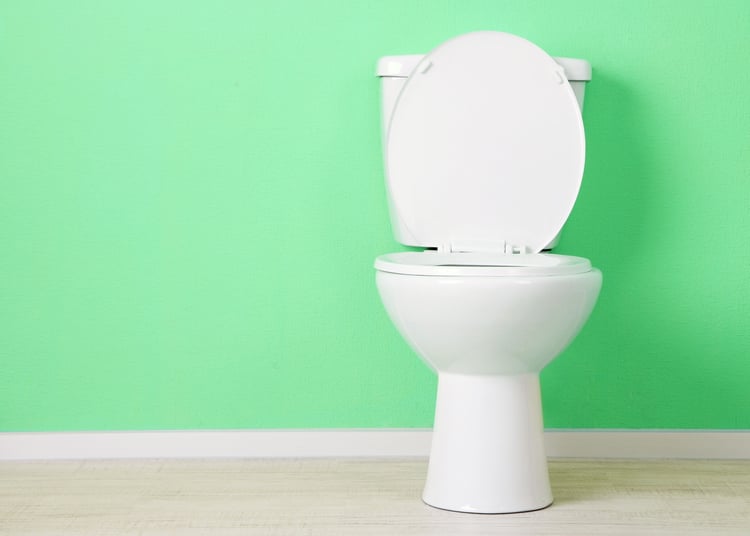
There are a few things you can do to try and fix your toilet before calling a professional plumber. Now that you know some of the common reasons why your toilet won't flush, let's take a look at how to fix it, depending on what the problem involves, so you can make sure your toilet flushes again.
Tips for Fixing Toilet Clogs
If your toilet is clogged, the first thing you'll need to do is remove the blockage. This can usually be done with a toilet plunger or a plumber's snake. If you don't have a toilet auger, you can purchase or rent one from your local hardware store. If this doesn't work, you can also try a solution of vinegar and hot water and flushing it down.
When using a plunger, the key is to create suction. Put the plunger in the bowl and create a seal around the toilet drain. The toilet should have enough water to cover the cup of the plunger. If you have a low water level, you may need to add some from the sink before plunging.
If you're dealing with tree roots, you may need to call a professional who can inspect your pipes. Tree roots can grow into your main sewer line and crack the pipes.
Tips for Fixing a Damaged Flapper
If the flapper assembly is damaged, you'll need to replace it. This is a fairly simple job that you can do yourself, or you can call a professional plumber to do it for you.
Tips for Fixing a Toilet with Not Enough Water in the Bowl
If there isn't enough water in the bowl, then you'll need to add more. Check for leaks around the fill valve and make sure the vent stack is clear. If this doesn't solve the problem, then you may need to replace the fill valve entirely.
What to Look For In Your Toilet Water Tank
If your toilet's water tank is not filling up properly, then you'll need to check the float arm and fill valve beneath the toilet's tank lid. The fill valve is responsible for letting water into the tank, and the float arm controls how much water is released when you flush. If either of these are damaged or not working properly, then it can cause your toilet to not flush properly.
How to Fix Clogged Rim Holes
If your rim holes are clogged, you'll need to clean them out. This can usually be done with a toilet brush or a plumber's snake. You can also use a wire in the individual rim holes to try to clear them out and see which ones are blocked.
If this doesn't work, you can also try using a solution of vinegar and hot water. Adding vinegar to the toilet tank can help break down any mineral deposits that have built up in there that are causing the blockage.
Grab a Plunger
The most common tool for unclogging a toilet is the plunger. There are two basic types of plungers. There is the flange plunger and the cup plunger. Most people have the cup plungers in their homes These plungers are made to create a seal against a level surface such as a bathtub or sink.
The toilet bowl requires a specific plunger mold because of its bowl shape. The flange plunger and another similar plunger called the ball plunger have this special shape that can seal the opening in the bottom of the toilet and hold the required suction and vacuum pressure during the plunging.
Before you begin plunging, it is essential that you only flush the toilet ONCE. Flushing the toilet repeatedly will only cause excess water to fill the bowl and possibly cause an overflow.
To use the flange plunger, place the cup over the drain opening and vigorously pump the plunger’s handle up and down. The pressure of this action will push and suck water into the drain to free the clog. If the toilet drains, you have cleared the obstruction.
Use a Closet Auger
If you do not have any luck with a plunger, then it is time to move on to the closet auger. This plumbing tool is composed of a hand crank that is attached to a flexible metal line. At the end of the metal line rests a screw-like tip that rotates as the crank is turned. The tip penetrates into the blocked material and then breaks up the blockage to clear the drain, or takes hold of the clog to allow it to be pulled out.
Closet augers are created to enter the toilet through the bowl, while the general-purpose auger generally enters the drainage system through a pipe. For persistent obstructions, closet augers are the ideal choice. The auger can reach approximately three feet.
Toilet Leaking at the Base
Toilets that leak at the base are usually an easy fix with some DIY how-to steps.
Why Toilets Leak at the Base
Here are some of the reasons why your toilet might be leaking from the base.- The Tee Bolts Need to Be Tightened.
The base of your toilet is held to the ground with two bolts called tee bolts. If these bolts loosen, the toilet will likely rock, causing the seal formed by the wax ring to break. Drain water may seep out of the base each time you flush the toilet if your tee bolts are very loose. - The Wax Ring Needs to Be Replaced.
The wax ring usually needs to be replaced because the toilet is loose. The other reason why a wax ring may need to be replaced is that it has been worn down over the years and is no longer pliable. This means the seal is no longer intact. Therefore, it causes water to seep through the base. - There's a Loose Water Supply Line.
If there's a loose water supply line, you'll notice that the water is leaking from the base of your toilet all of the time, rather than just when you flush it. Check the connection where the supply line connects to the tank to make sure the nut and rubber seal are tight. - Water Is Condensing on the Toilet and Dripping Down.
Water in a toilet tank and bowl is usually fairly cold, and so is the porcelain. A humid room causes water to drip down from the porcelain on the bowl, and you'll notice water pooling at the base of your toilet.
Once you discover the source of the leak, you can gather the proper tools you need to fix the toilet.
How to Stop Your Toilet From Leaking Around the Base
Review these steps in detail so you can repair your toilet leak by yourself.
1. Check For Condensation.
Before you dive into your toilet repair project, check the outside of your toilet bowl to make sure the problem isn't due to condensation.
If the problem is due to condensation, try the following tips to prevent water puddling at the base of your toilet:
- Install a tray.
- Insulate your water tank.
- Make sure your flapper isn't faulty.
- Take shorter, cooler showers, and turn the fan on.
If this is not the problem, continue searching for the source of the issue.
2. Tighten the Tee Bolts.
Remove the plastic covers from the base of your toilet on both sides. Use an adjustable open-end wrench to tighten the tee bolts. Tightening the toilet against the floor makes sure the wax ring that seals the toilet drain outlet will be compressed.
If the tee bolts are already tight or can't be tightened, you may need to remove and reinstall the toilet to install a new wax ring and new bolts.
3. Disconnect and Remove the Toilet.
Shut off the water to your toilet before you begin disconnecting it. The shutoff valve is usually located on the left side of the toilet near the water supply tube and the water valve tailpiece.
- Flush your toilet to drain all the water from your toilet and the tank. Use a sponge or cloth to get rid of excess water in the toilet tank and bowl.
- Next, use a screwdriver to unscrew the nut that mounts the supply tube to the fill valve tailpiece.
- Use your wrench to remove the nuts from the tee bolts at the base of the toilet. You may need to use a hacksaw to sever each bolt if the tee bolts are corroded and won't turn.
- Remove the toilet by lifting it up and away from the floor drain. It may be helpful to have someone help you move the toilet, instead of attempting to move it on your own.
- Set the toilet on its side to prevent damage.
4. Remove the Wax Ring, and Install a New One.
Scrape away the old wax from around the drain opening using a putty knife. Make sure you remove all of the old wax.
Install the new wax ring once all of the putty is scraped up. The ring will be placed with the plastic cone facing down toward the drain. Ensure that the tee bolts are positioned correctly in the key openings on each side of the flange.
5. Reinstall the Toilet.
Lift the toilet carefully, and place it back over the drain so that the tee bolts can go through the holes in the base of the toilet. Press the toilet down onto the wax ring, rocking it gently so the toilet compresses the wax to create a tight seal.
Tighten the tee bolts and nuts with a wrench, making sure they are not over-tightened, which may cause the porcelain to crack.
6. Connect the Water Line.
Reconnect the water supply tube to the fill valve, and turn the water back on. Flush the toilet after the toilet tank fills back up, then inspect for leaks.
Once you are sure there are no leaks present, seal the base of your toilet with caulk.
When to Call a Professional Plumber
in Sacramento
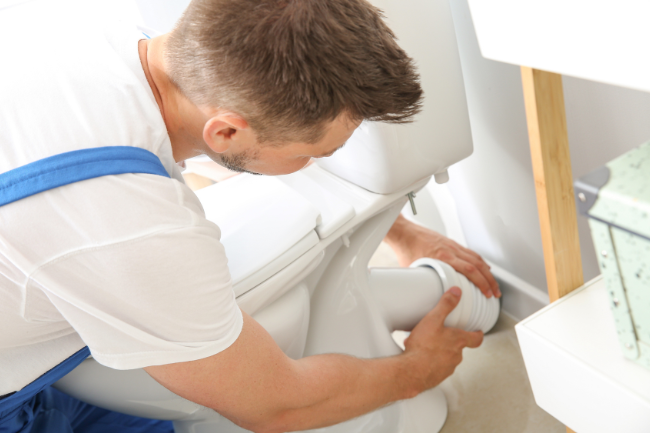
If you've tried all of these tips and your toilet still won't flush, then it's time to call a professional. They will be able to inspect your pipes and determine what the problem is while keeping things flowing smoothly.
4 Reasons to Call a Professional Plumber
If the obstruction could still not be removed, it might be an indication that some professional help is required. There are several times when calling a plumber is better and safer than trying a DIY job.
The Plunger Wouldn’t Work
For a simple case of too much toilet paper, a plunger is normally the only tool you need to get the water flowing again. Sometimes though, the toilet is just plain stubborn and needs a little more coaxing. Using a snake or the old baking soda and vinegar trick are other options to try, but you’ll probably find it to be more of a hassle than anything else. If done incorrectly, a plunger can break the wax ring at the base of the toilet, leading to flooding and water damage.
It is also recommended that you never use chemical products, like Drano, to unclog the drain. These items may be sold in stores, but pouring chemicals down your drains can cause corrosion and lead to leaks.
The Toilet is Running
It just trickles and swirls, but you probably don’t want a constant whirlpool in your bathroom. Not only is a running toilet costly, but you will more than likely find yourself messing with it every time you use it just to get it to stop. This issue could be a sign that the water flap, which controls the flow of water from the tank to the bowl, no longer fits as it should. There may be another reason, but calling a professional plumber will be the only way to receive a proper diagnosis.
Foreign Objects Were Flushed
Remember your son’s action figure? Well, it may have gotten stuck farther down than you think, traveling as far as the drain line underneath the toilet. At this point, only Mr. Fantastic could reach in far enough and pull that toy out. Should a foreign object pass beyond the toilet, it could damage the sewer septic lines.
You Can Smell the Problem
A funky smell is an indication of a bigger problem. Hidden leaks often result from overly strained or clogged toilets, and can cause a multitude of issues. The smell wafting through your home is bad enough, but a hidden leak that’s left unchecked will quickly raise your water bill. In addition, there could be severe damage behind your walls or under the floor, which may result in mold—that’s never good for your respiratory system. There is not much you can fix on your own at this point, so a professional plumber is recommended.
Toilet Issues? Call Your Local Sacramento Plumber
At Express Sewer, we utilize trenchless technology to inspect your pipes without tearing up your yard in Sacramento County. We also use video to conduct sewer inspections to identify the cause of any issues as accurately and non-invasively as possible.
Our team of professional plumbers services Sacramento, Carmichael, Rancho Cordova, Citrus Heights, and surrounding areas in Sacramento County. Contact a licensed plumber from our team today for a free quote and a successful flush!
Topics: Plumbing in Sacramento, Home Plumbing, DIY


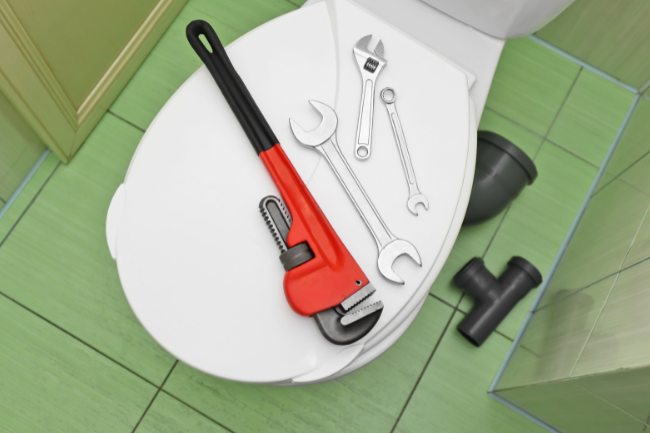
![How to Prevent Flooding [6 Tips to Protect Your Property]](https://www.expresssewer.com/hubfs/prevent_flood.png?width=550)



